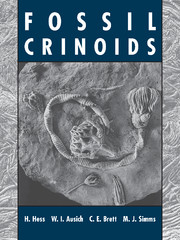Introduction
Published online by Cambridge University Press: 10 November 2010
Summary
Brightly coloured feather stars fascinate divers in tropical coral reefs, and stalked sea lilies are among the most attractive fossils. Both belong to the class of crinoids, suspension feeders that have graced the oceans for more than 500 million years. Crinoids are common fossils, had a key role in the ecological structuring of marine communities through much of the fossil record and played an important role in rock-building. Crinoids are the topic of this book, which brings together for the first time the essentials of crinoid morphology, preservation, systematics, phylogeny and mode of life in the context of the most important and interesting crinoid fossil assemblages. The book attempts to re-create a picture of fossil crinoids alive in their natural habitats. We hope that some of our enthusiasm for these living and fossil animals will be conveyed to our readers, professionals and amateurs alike.
Crinoids are a class of echinoderms (phylum Echinodermata). These marine animals are characterized by a calcareous endoskeleton of distinct plates or ossicles, radial symmetry and an internal water-vascular system. The echinoderm skeleton is highly porous in a living animal but is easily transformed into solid calcite during fossilization, which explains the richness of crinoidal remains throughout geological history. Crinoids differ from other classes of living echinoderms, such as starfish (Asteroidea), brittle stars (Ophiuroidea), sea urchins (Echinoidea) and sea cucumbers (Holothuroidea), by their morphological organization and their way of feeding. These other echinoderms seek food mostly on the sea floor, so their mouths are directed downward, whereas crinoids filter the water for plankton and direct their mouths upward. Crinoids are placed in the subphylum Pelmatozoa along with other, extinct classes, commonly grouped in the blastozoans.
- Type
- Chapter
- Information
- Fossil Crinoids , pp. xiii - xvPublisher: Cambridge University PressPrint publication year: 1999



